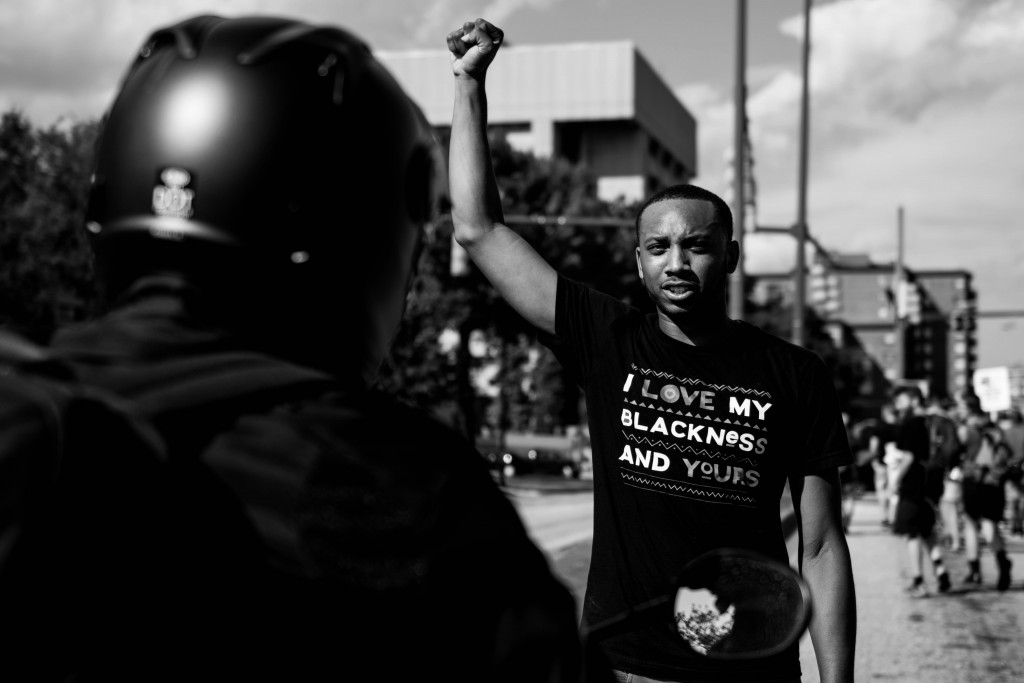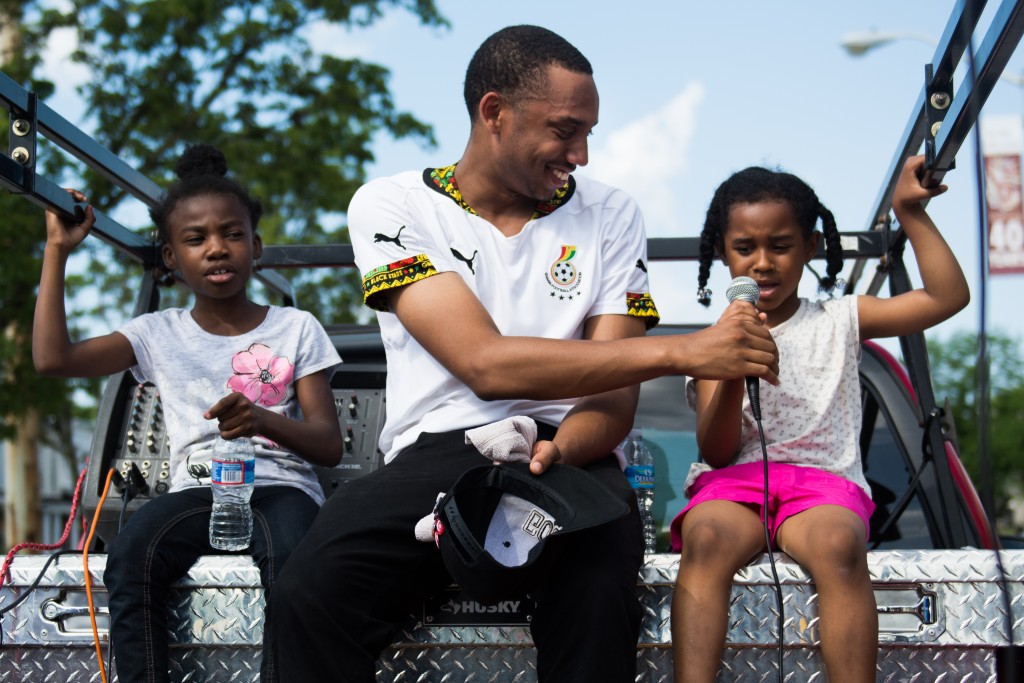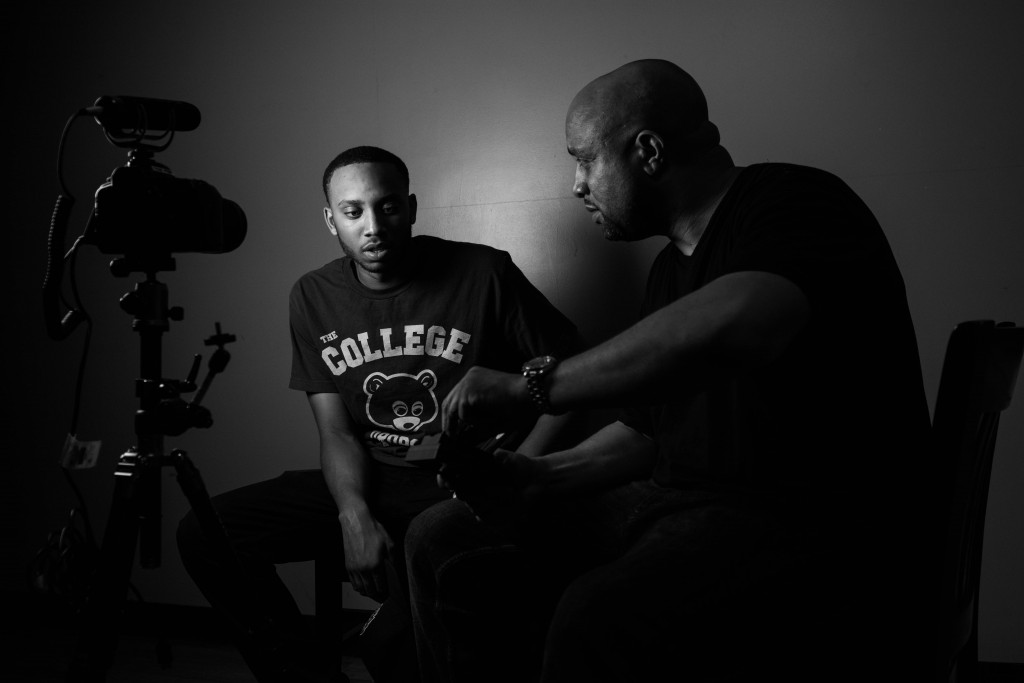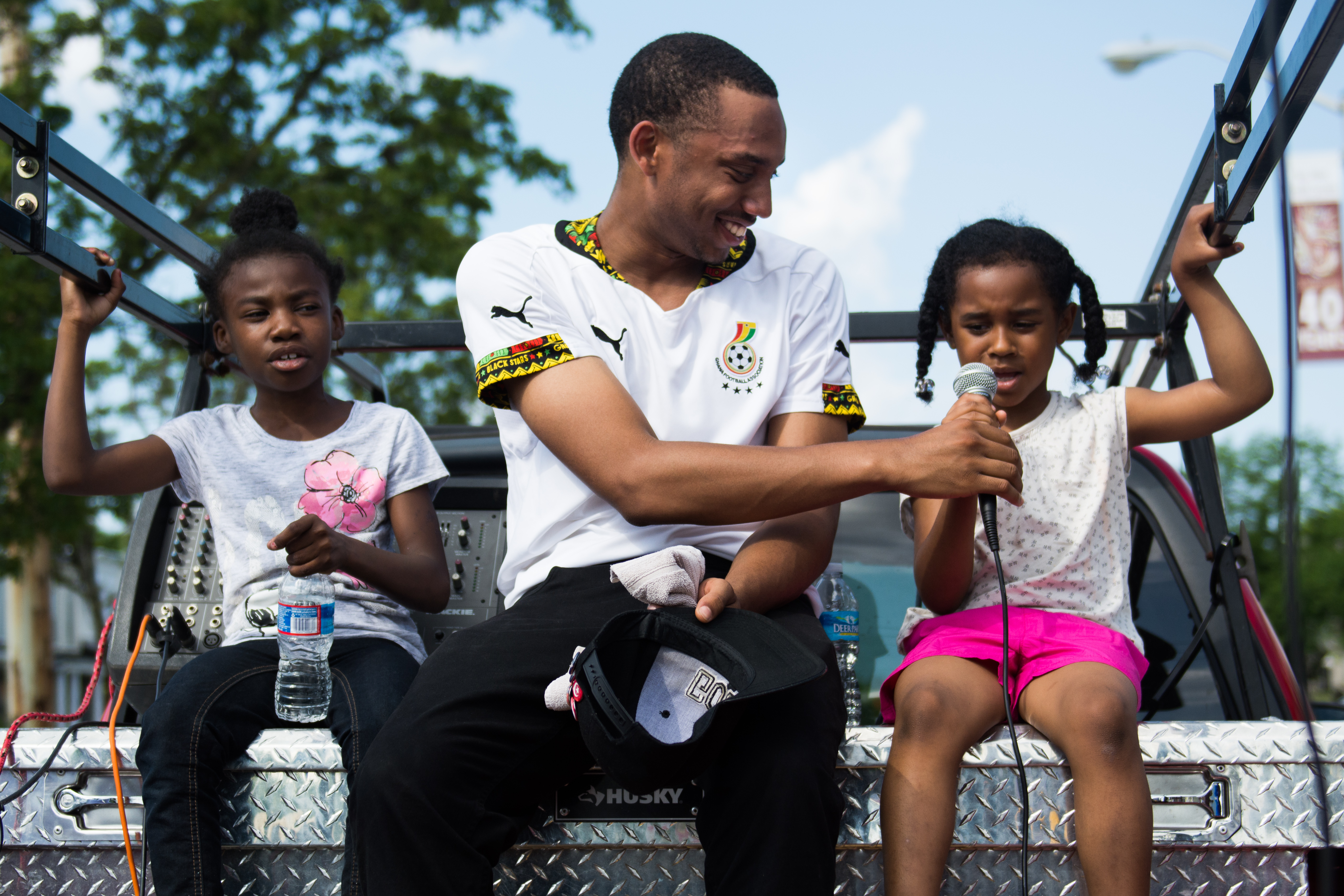
On the morning of April 12, 2015, Freddie Gray was walking in his Gilmor Homes neighborhood when his eyes met briefly with those of a white police officer’s. He ran. Since Gray was black, and Gilmor Homes is a housing project located within the city of Baltimore, the cop took this as probable cause to pursue him. Eventually, Gray was taken into custody. A week later, he was dead.
The details of what took place, from the time the cops caught up to Gray to when he died in Shock Trauma a week later, have been poured over by activists, residents, the media, attorneys, and investigators—and yet, the facts of his death still remain unclear. What we do know is that Freddie Gray, a 25-year-old who had suffered significant brain damage due to lead poisoning as an infant, who had trouble staying in school and lived well below the poverty line for the extent of his short life, garnered a crushed voice box and a severed spine while in police custody, and did not receive medical attention until it was too late. In the tradition of many police brutality cover-ups, the Baltimore Police Department let slip to the media that Gray could have caused his own injuries. In what has since come to be known as the Baltimore Uprising, the people of the city called bullshit on that.
“I want you and Fox News to get out of Baltimore City,” activist Kwame Rose told TV pundit Geraldo Rivera in a live broadcast that went viral. “You are not here reporting about the boarded up homes and the homeless people under MLK [Boulevard]. You’re not reporting about the poverty levels up and down North Avenue. But you’re here for the black riots that happen,” he continued. “You’re not here for the death of Freddie Gray. I want the white media out of Baltimore City until you’re here to report the real story.”
Everything you need to know about what makes the Black Lives Matter movement so necessary can be unpacked from this encounter: mass media arriving in Baltimore to sensationalize black rage, Geraldo Rivera’s refusal to seriously engage with Rose (Rivera later said that Rose displayed “exactly that kind of youthful anarchy that led to the destruction and pain in that community,”) further criminalizing Rose’s behavior and invalidating not only his, but Baltimore’s response, and effectively erasing the cause of the uprising by barely mentioning Freddie Gray at all.
“You’re not here for the death of Freddie Gray. I want the white media out of Baltimore City until you’re here to report the real story.”
Their lenses zoomed in on a burning CVS and blurred out a paralyzed Gray being dragged into a police wagon; they exploited the message of a grief-stricken city into the war cry of an inherently violent people. “Start the story with the arrows of the Native Americans, and not with the arrival of the British, and you have an entirely different story,” said writer Chimamanda Ngozi Adichie in her TED Talk, “The Danger of a Single Story.” “White media” arrived in Baltimore with the sole intent of telling a sliver of the story, and Rose unapologetically called them out.

“I’m a 21 year old from Baltimore who found a sense of purpose for life while protesting the death of Freddie Gray,” Rose told me. He’s a hip-hop artist who’s been spending time in the recording studio since the seventh grade. For several years, he served on the executive board of Brothers In Action, Inc., a mentoring group for young black males in Baltimore, and earned a full scholarship to the University of Texas at San Antonio as a member of the debate team before returning to his hometown a year later. “In Baltimore, before Freddie Gray there was Tyrone West, before Tyrone there was Anthony Anderson.” Excessive, unwarranted harassment on the part of the police is not foreign to him. “I can’t count how many times I’ve been pulled over or stopped for no reason and given a ticket.”
As Rose points out, the narrative of the Baltimore Uprising did not begin and end with Freddie Gray. It must be read in the context of a long, bloody history of police brutality in Baltimore, which is itself a chapter in the story of white supremacy in this country that is written into its foundation. But Baltimore’s is so heinous, widespread, and well-documented that that it is surprising there wasn’t an uprising of this proportion earlier. Perhaps the uprising could only have taken place in this moment—at the height of the Black Lives Matter movement—where people are daring to hold accountable each officer, each politician, and each media outlet complicit in their oppression, around the specific fear and trauma that racist policing can have on whole communities. A movement that refuses to let the world forget the name of each victim of state terrorism. Accountability is what Rose was looking for the night he confronted Geraldo Rivera, Fox News, and the country.
“Society is rooted in white supremacy, and the treatment of black people in America has never been addressed with seriousness. I had no idea who Geraldo Rivera was, but he wasn’t there for the right reasons,” says Rose. The problem with broken windows policing in Baltimore has gone largely ignored by mainstream media, so when they showed up to exploit a community’s grief on the night of a funeral for one of its sons, you better believe people were pissed. “If you think about the media’s coverage of black people in general, it’s rooted in anti-blackness. During the uprisings, the media turned their cameras off during the dozens of peaceful marches and only became interested when a CVS started burning. If people knew and understood the conditions that lead up to what was perceived as a riot, then they’d be aware that an uprising took place.”
“I’m a 21 year old from Baltimore who found a sense of purpose for life while protesting the death of Freddie Gray.”
In 1930, the Baltimore Afro-American reported, “The trouble is police brutality in Baltimore has gone as far as some people are going to stand.” Some 84 years later, the Baltimore Sun published an in-depth report on the many victims of police brutality who had won settlements to the tune of $5.7 million since 2011. However, the Baltimore Police Department did not keep track of the number of lawsuits filed against each officer, and the settlements did nothing to provide accountability for their abuse. Additionally, the settlements include a gag clause, where victims aren’t allowed to discuss their settled cases with the media. Thus, Baltimore’s taxpayers are paying millions to victims of police brutality to stay silent, while the cops that injured them or killed their loved ones are free to patrol the streets another night.
After the Baltimore Uprising, retired BPD detective from the violent crimes division, Michael A. Wood Jr., took to Twitter to confess all the corruption and brutality he witnessed on the job, including thousands of illegal searches, cops defecating and urinating on the beds and other furniture of suspects’ homes, and the specific targeting of young black men. “People need to understand that nothing has changed in Baltimore,” says Rose. Crime in Baltimore has soared since May, with many pointing to a general strike attitude in response to the movement for accountability. “Right after the protest in May, the police simply stopped doing their jobs,” says Rose. Two BPD officers went on CNN to say as much. They’re basically giving the city an ultimatum: either we police the city our way, or not at all. Meanwhile, the lives of the most vulnerable community, black Baltimoreans, especially on the Westside, hang in the balance.
Regarding how the public’s response to his confrontation with Rivera affected him, Rose is honest: “I read all the comments: ‘He’s just an agitator trying to be on TV,’ ‘He’s another race-baiter,’ and everything else, and for a while, a part of me started believing every negative thing that was being said about me.” Rose was only pointing out what so many other Baltimoreans were feeling that night. He was appealing for a conversation, while Rivera evaded him, smiling, only to tell him that he was “making a fool of himself” on air. “A black man can raise his voice, and you don’t have to be intimidated,” Rose told Rivera. But that kind of sense-making is contrary to the pathology of a racist White America. After the incident, Rose “stopped coming out the house, and for the first time ever in my life, battled depression.”

It was a conversation with his barber, Lemon, that brought Rose back up from his depths. “He told me straight up, ‘None of those people know you. They can’t tell you how to be yourself. Being yourself is how the kids that look just like you feel encouraged to be themselves. If you let other people dictate your happiness, you’ll never be free.” To some of its viewers, the Fox News confrontation fit cozily into the stereotype of Angry Black Men that this country has been trying to push since its inception. But to others, to those with which it resonated, Kwame Rose remains an iconic agitator who refused to let his city’s message get lost in white supremacist static. “My true passion is caring about the betterment of black people, not making sure a few individuals are satisfied with how I’m living. Whatever I can do to help push forth an agenda that will finally bring about an end to systematic violence black people face in America, I’ll do. That includes remaining dedicated to the truth, in any and all spaces.” He adds, “The uprisings gave people an experience that I’ll cherish for the rest of my life.
